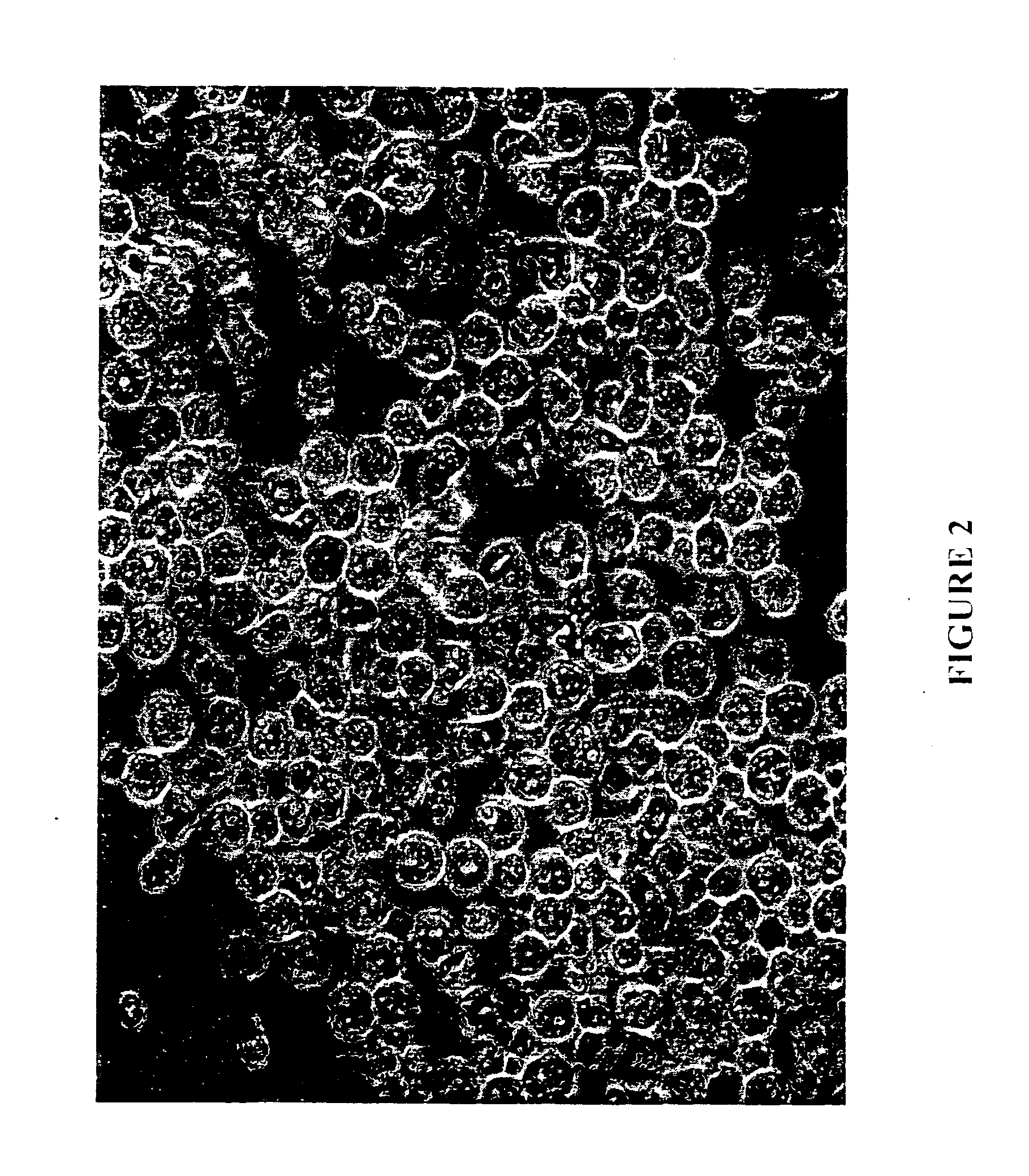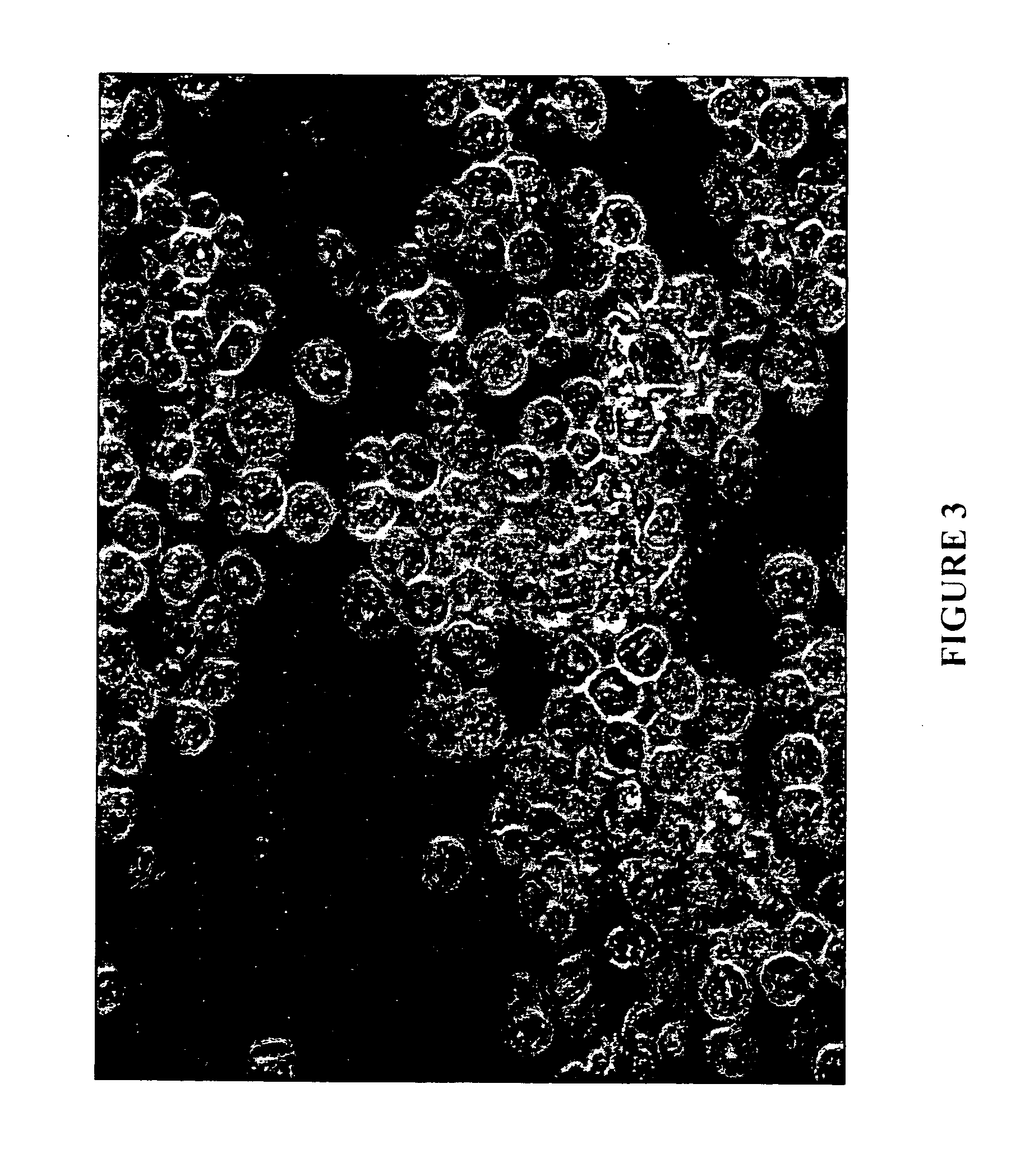Tissue culture medium for culturing potentially regenerative cells and functional tissue-organs in vitro
a technology of tissue culture and regenerative cells, applied in the field of culturing cells, tissues, organs in vitro, can solve the problems of inability to proliferate well, cells are not very stable, and cells are aliv
- Summary
- Abstract
- Description
- Claims
- Application Information
AI Technical Summary
Benefits of technology
Problems solved by technology
Method used
Image
Examples
example 1
Culture of Human Intestinal Cells In Vitro
[0171] An in vitro experiment on human intestinal cells was carried out by following this protocol:
[0172] Obtained normal human living intestine from surgical operations, first put the tissue lump into double antibiotics (penicillin and streptomycin)-containing, precooled phosphate buffered saline (PBS), rinsed three times, cut the large tissue lump into small pieces of 1 mm3, then rinsed them with same PBS two times, put these washed small pieces into 0.25% trypsin or 1% collagenase digestive solution prepared with sterile PBS, digested them under the condition of 4° C. overnight with shaking (about 16 hours) or 37° C. water bath, 3 hours with shaking.
[0173] Used pipette or aspirator to blow and aspirate the tissue repeatedly or poured the mixture of tissue pieces with enzyme solution into stainless steel filter, and used syringe plug to grind the tissue pieces until all pieces were dispersed into single cells.
[0174] Seated still the mi...
example 2
Culture of Mouse Intestinal Mucosal Villi In Vitro
[0189] The in vitro experiment on mouse intestinal cells was carried out by following this protocol:
[0190] Killed Kunming mouse provided by qualified Laboratory Animal Institute, Chinese Academy of Medical Sciences with routine protocol known to skilled artisans in this field. Sterilized its body surface two times with 75% ethanol, 5 minutes each time. According to anatomical localization, took the exact living tissues. To disperse the tissues into single cells, put the tissue pieces into double antibiotics (penicillin and streptomycin)-containing, precooled PBS, rinsed three times, cut the large tissue lump into small pieces of 1 mm3, then rinsed them with the same PBS two times, put these washed small pieces into 0.25% trypsin or 1% collagenase digestive solution prepared with sterile PBS, digested them under the condition of 4° C. overnight with shaking (about 16 hours) or 37° C. water bath, 3 hours with shaking.
[0191] Cultured...
example 3
Culture of Mouse Bone Marrow Tissue In Vitro
[0201] The in vitro experiment on mouse bone marrow was carried out by following this protocol:
[0202] Harvested bone marrow cells from Balb / c mouse provided by qualified Laboratory Animal Institute, Chinese Academy of Medical Sciences. The cell collection method is known to skilled artisans in this field. In the test wells, RPMI1640 medium and a mixture of stigmasterol, β-sitosterol and campesterol (1:1:1 in weight, about 1% w / w of the total weight of the medium), beeswax at 10% (w / w medium), and obabenine at 0.003% (w / w medium).
[0203] After continuous culture of the bone marrow for 64 days, the following results were obtained. Refer to FIG. 16A. Progenitor cells appeared in the test group, these cells aggregated and formed large and small colonies, and evolved into bone marrow tissues gradually.
[0204] Refer to FIG. 16B, after 10 days of continuous culture, bone marrow progenitor cells appeared in the control group. However, after 15th...
PUM
| Property | Measurement | Unit |
|---|---|---|
| temperature | aaaaa | aaaaa |
| temperature | aaaaa | aaaaa |
| temperature | aaaaa | aaaaa |
Abstract
Description
Claims
Application Information
 Login to View More
Login to View More - R&D
- Intellectual Property
- Life Sciences
- Materials
- Tech Scout
- Unparalleled Data Quality
- Higher Quality Content
- 60% Fewer Hallucinations
Browse by: Latest US Patents, China's latest patents, Technical Efficacy Thesaurus, Application Domain, Technology Topic, Popular Technical Reports.
© 2025 PatSnap. All rights reserved.Legal|Privacy policy|Modern Slavery Act Transparency Statement|Sitemap|About US| Contact US: help@patsnap.com



